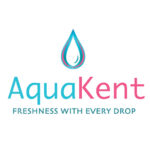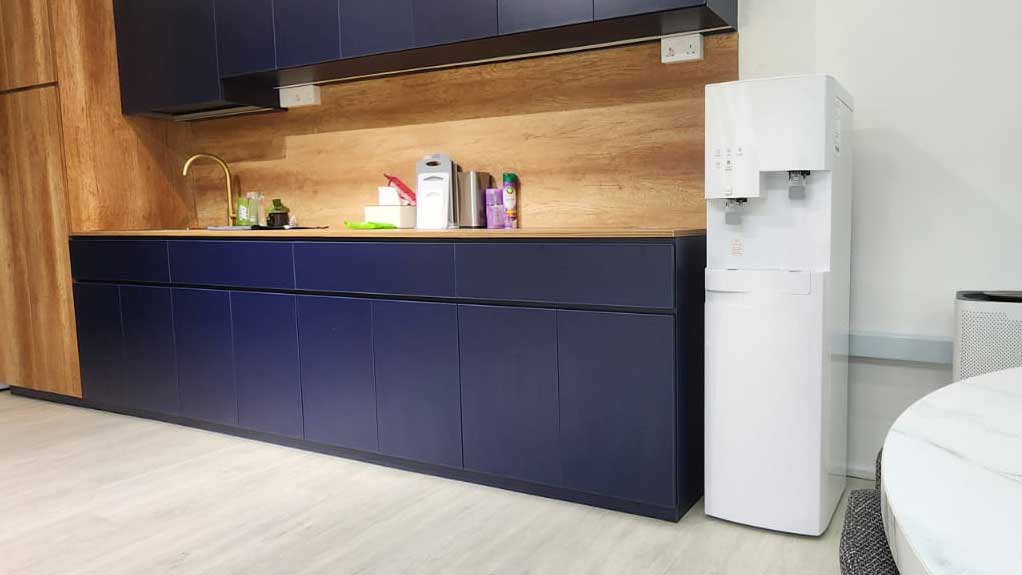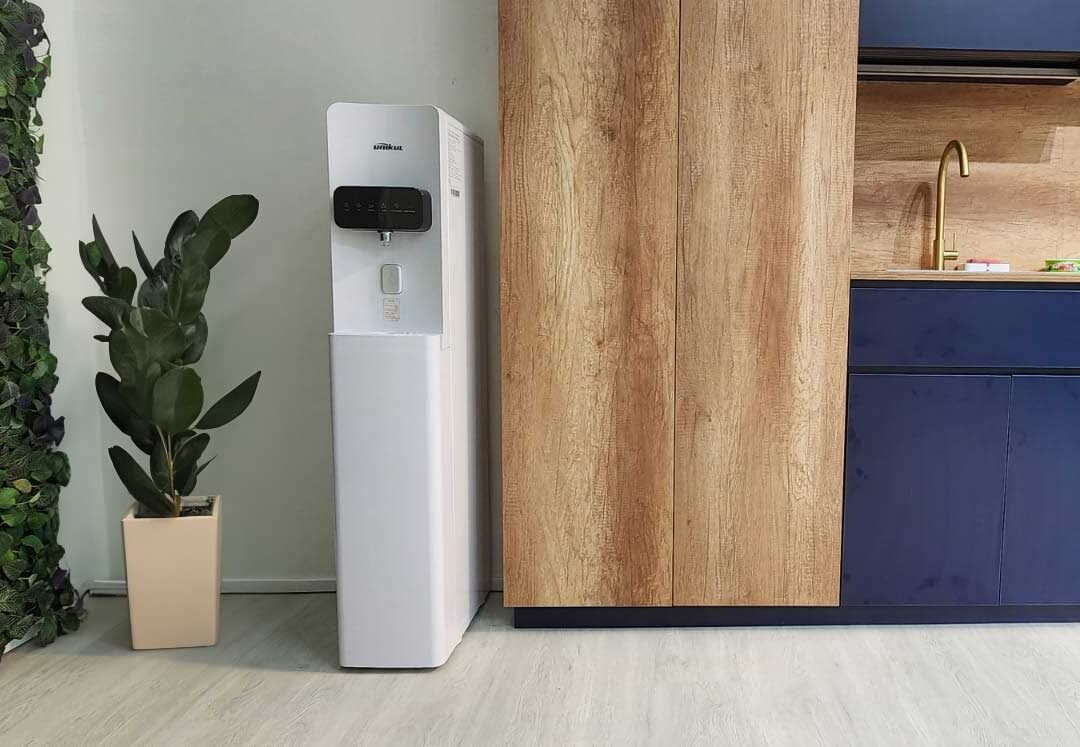Let me ask you something.
You use a water dispenser every day.
But have you ever opened it up… really looked inside?
Would you drink straight from that tank if you saw what was growing in there?
I wouldn’t.
And I’m the one selling these things.
Let’s break down what 90% of people in Singapore get wrong about their water dispensers—and what most units completely miss when it comes to actual clean water.
Not All Water Is Equal—Even in Singapore
Yes, Singapore’s tap water is technically safe.
It meets WHO standards.
It’s chlorinated and well-regulated.
But “safe” doesn’t mean clean, and definitely not tasty or mineral-balanced.
Here’s what your tap water still carries:
- Microplastics
- Residual chlorine
- Pipe contaminants (especially in old HDB blocks)
- Limescale deposits
So when you plug a dispenser straight into the wall without filtration, all that just flows through. Heated. Dispensed. Consumed.
Most Water Dispensers Aren’t Really Filtering
People buy dispensers assuming they’re doing the job.
But most bottled or even some basic tank-based units don’t filter anything.
They just chill or heat water.
Here’s what they miss:
- No activated carbon → Can’t remove chlorine or odour
- No UF/RO membrane → Can’t eliminate bacteria or heavy metals
- No sediment filter → Rust, dirt and scale still flows through
- No UV or antibacterial tech → You’re sipping from a germ spa
What Does a “Filtered Water Dispenser” Actually Mean?
Now here’s where it gets tricky.
The word “filtered” gets thrown around a lot.
But in this context, filtered water dispenser refers to a unit that has integrated purification stages—not just a basic dust filter inside the tank.
In Singapore, a proper filtered water dispenser should include:
- Pre-filtration (removes dirt, rust, sediment)
- Activated carbon (removes chlorine, odour, taste)
- UF or RO membrane (filters viruses, bacteria, heavy metals)
- UV sterilisation or antibacterial coating (final defence line)
Anything less? You’re not drinking clean water.
Bottled Water Isn’t the Answer Either
Think those 19L blue bottles are better?
Here’s the ugly truth:
- Exposed bottles grow algae when stored near sunlight
- Reused bottles often carry microbial biofilm
- Plastic leaching increases if exposed to heat (delivery trucks, pantry corners)
- And once you open it, that water sits stagnant in a tank for days
So if you think bottled water = premium clean hydration?
Nope.
Let’s Talk About Tank Hygiene
Tankless systems are trending for a reason.
They heat and cool water on demand, without storing it.
That means:
- No bacterial build-up inside tanks
- No stale water sitting for days
- No biofilm on inner walls
- Lower maintenance
Compare that to tank-based units, especially ones that store warm water (a bacteria playground), and the hygiene gap is obvious.
Real Story: A Client’s “Clean” Bottled Dispenser
One client at a law firm in Tanjong Pagar called us for a routine service.
They’d been using a top-loading bottled unit for over 3 years.
We opened the hot tank.
Thick layer of brown sediment at the bottom.
Their admin team thought the water “tasted off.” It wasn’t taste—it was contaminants baked into the tank.
They now use a tankless filtered water dispenser, serviced every 6 months.
Why Tankless + Filtered is the Future (Especially in SG)
Singapore’s humidity + high ambient temperature = rapid bacterial growth.
You don’t want water sitting around.
Here’s what a proper unit gives you:
- Hot, cold, and room temp water instantly
- Multi-stage filtration (like our Unikul series)
- Touchless operation for hygiene
- Filter reminders so you never forget
- Compact designs for condos and HDB kitchens
You get health, convenience, and peace of mind in one box.
Here’s What to Look For in a REAL Filtered Water Dispenser (Singapore Edition)
If you’re shopping around, don’t fall for “filtered” claims without proof.
Use this checklist:
✅ Filtration stages clearly stated (at least 3 preferred)
✅ Filters are certified (look for NSF or equivalent)
✅ Tankless or self-cleaning tanks
✅ Has an internal UV steriliser or antibacterial nozzle
✅ Local support team
✅ Filter replacement system is simple
Don’t just compare prices—compare filter quality and hygiene engineering.
You Can’t See Bacteria, But You Can Taste the Difference
Most people think water is just water.
But once you start drinking properly filtered water?
You taste the difference instantly.
Cleaner. Lighter. No aftertaste.
And you feel better over time—less bloating, no plastic tang, no dry mouth.
To keep you reading (and learning), here are a few relevant reads:
- 👉 Tankless vs Bottled Water Dispenser Singapore
- 👉 Best Water Dispensers for Small Office Pantries in Singapore
- 👉 How Often Should You Replace Your Water Dispenser Filters?
You don’t need to be paranoid.
You just need to be aware.
And now that you know what most water dispensers miss?
It’s time to make the clean switch.
→ Browse Aqua Kent’s Filtered Tankless Water Dispensers
Which water dispenser is best in Singapore?
That depends on your needs — but for modern HDB or condo living, tankless, compact water dispensers with built-in filtration are the top choice.
Why?
– They take up minimal counter space
– They provide filtered water on demand (hot, cold, room temp)
– They fit Singapore’s lifestyle: fast-paced, hygiene-conscious, space-limited
Our Unikul tankless series is one of the best for Singapore homes.
Does Singapore water need a filter?
Yes — even though Singapore tap water meets WHO standards, it still travels through pipes that can introduce chlorine, rust, and sediments.
Filtering your water removes:
– Chlorine taste and odour
– Microplastics
– Limescale and heavy metals
– Residual sediments from old pipes
You’ll get cleaner, safer, and better-tasting water from a filtered dispenser.
Is filtered water better than tap water?
Yes. Filtered water not only tastes better, it also removes impurities that may not be visible, like:
– Bacteria
– Chemical residues
– Excess chlorine
– Heavy metals
With a multi-stage filtration system, you’re getting water that’s cleaner and healthier, whether for drinking, cooking, or your morning coffee.
What is the best water filter dispenser?
The best water filter dispenser is one that offers:
– Multi-stage filtration (sediment, carbon, UF/RO, UV)
– Tankless design for hygiene and energy efficiency
– Compact size that fits your kitchen space
– Certified filters with easy replacement
– Smart features like volume presets and child locks
Our recommendation for Singapore homes?
A compact tankless model like Unikul, designed for small spaces but loaded with high-performance features.
Can water filters remove bacteria?
Yes — if you’re using the right kind.
Standard carbon filters won’t cut it alone.
Look for:
– UF (Ultrafiltration) membranes for bacteria-sized particles
– RO (Reverse Osmosis) for more aggressive purification
– UV sterilisation for killing microbes at the final stage
The best filtered dispensers combine these technologies to deliver bacteria-free water straight from your tap.







